A very rich and typical Spanish dish in summer
Tuesday, January 30, 2018
Today I would like to bring you a very good recipe by a very good cook, named Maria José: “Tumbet mallorquín” (“Majorcan tumbet”).
In her blog, Maria José says that she liked it a lot, when she ate it at home, in summer, since she was a child.
This Majorcan dish serves as a garnish for almost everything: meat, eggs or fish.
The traditional thing is to arrange the layers of ingredients, in a clay pot, and it can be served both cold and hot.
These are the Ingredients (for 4 persons): 6 potatoes, 1 kilogram of tomatoes, 1 onion, 2 aubergines, half a head of garlic, 1 green pepper, salt and Virgin Olive oil.
And this is the way you need to cook this recipe:
First of all, you have to start washing the aubergines, remove the ends and cut them (the rest of auberinges), into slices not too thin, without peeling. Then place them, in a colander, with a little salt, and let them eliminate the bitter juice.

Some auberinges in a colander
Meanwhile, peel the tomatoes, remove the seeds, chop them; chop the onion too and arrange everything in a pan, to make a thick sauce. Let them go to simmer.
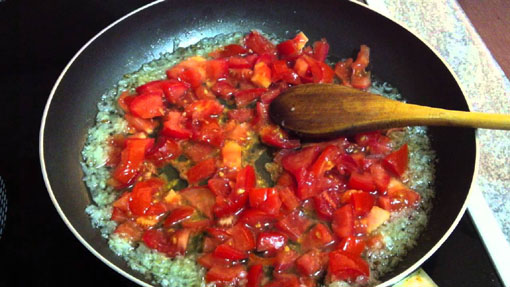
Sauté of tomatoes and onion
Peel potatoes, wash them and cut them into slices. Heat oil in abundance and fry them with the garlic. As they are fried, you will place them on a tray. Remove some of the oil from frying the potatoes, to make the pepper cut into strips.
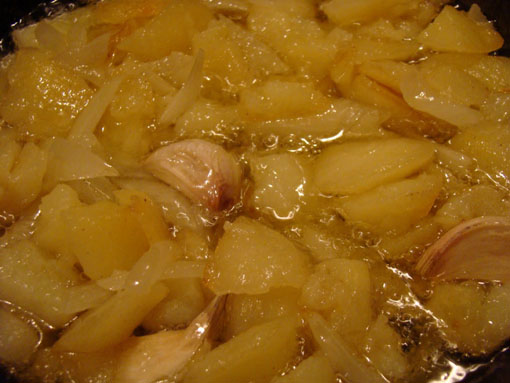
Frying potatoes and garlic
Rinse the auberinge slices, in plenty of water, pass them through flour and fry them. Put them on the potatoes that you have reserved. When the tomato sauce is ready, without the tomatoes being very undone, you add the pepper and spread it over the aubergines.

Frying auberinges

Sauce of tomatoes on auberinges
And this should be the result:
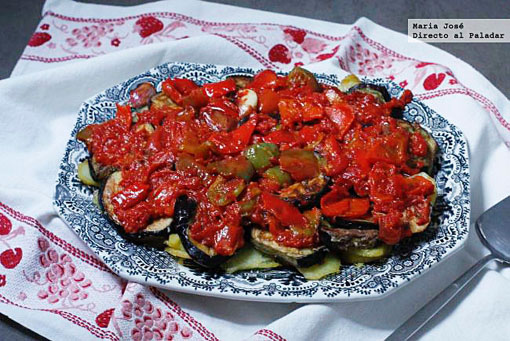
Tumbet from Mallorca
If tumbet is left over, --although that is weird, because tumbet is a very good dish and everyone likes it--, you can make an omelett, at night.

Omelette with auberinges and tomatoes
Well, I hope that you will like this recipe, hope that you will try to cook it and hope that you will like it such as I do..
Until my next post, kind regards,
Luis.
Sponsored by Costaluz Lawyers.
Please click below:

 1
Like
Published at 11:48 AM Comments (0)
1
Like
Published at 11:48 AM Comments (0)
Some threatened prehistoric caves in southern Spain
Tuesday, January 23, 2018
The nearly 300 prehistoric caves of the province of Cádiz are one of the twelve most threatened monuments, on the list of "pre-selected", developed by Europa Nostra and the Institute of the European Investment Bank (EIBI), on the occasion of the launch of the European Year of Heritage Cultural.
According to the sources of Europa Nostra informed to EFE, the list, prepared by experts in history, archeology, architecture, conservation, project analysts and economists, is the prelude to the relationship of "the seven most threatened", which is published every year, since 2013, and that will be released on March 15.
Hispania Nostra has been the one who proposed, to the caves and coves of Cádiz, an "exceptional" group, "one of the largest and most important in Europe that spans 20,000 years, from the Upper Palaeolithic to the Iron Age”, as one of "the seven more threatened", after confirming its "constant degradation", mainly by human use and vandalism "derived from tourism”. Its use, as a garbage dump, scratches, graffiti, bonfires has caused, they emphasize,"greater damage" than "natural processes for thousands of years".

Cave del Moro in Tarifa, Cadiz, at Paleolithic art

Cave of Las Palomas in Tarifa
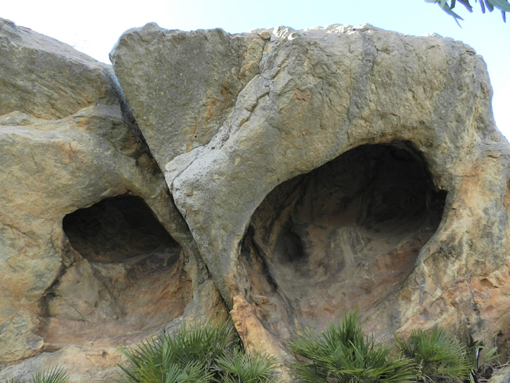
Cave of Ranchiles in Tarifa
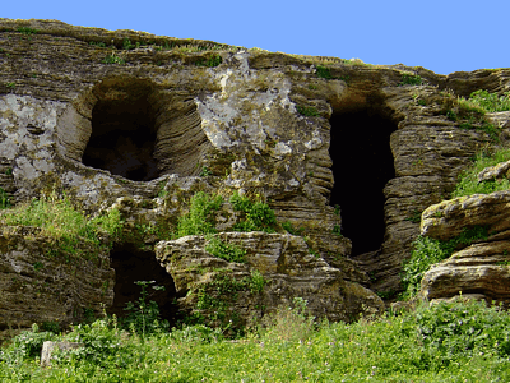
Necropolis of Los Algarbes in Tarifa

Cove of El Pajarraco in Los Barrios, (Cadiz)
The approximately 300 caves and coves contain paintings and engravings of animals, human beings and symbols of different styles, which belong mostly to the Schematic Art of the Iberian Peninsula, and nine of the coves and two deep caves also have "unique" paintings of hunter-gatherers, since the Upper Paleolithic.
Hispania Nostra wants to promote, with this action of denunciation, that a detailed inventory and a plan of management of the deposits are made, that measures are imposed to limit and control the visits and conservation measures are taken.
The other monuments in danger, besides Spanish, are the Historical Center of Gjirokastra (Albania); Post-Byzantine churches, in Voskopoja and Vithkuqi (Albania); the historic centre of Vienna; the coal preparation plant, in Beringen (Belgium); the monument Buzludzha (Bulgaria) and the Air Cable Network, in Chiatura (Georgia). It is completed by the Monasteries David Gareji and the Hermitage (Georgia); the castle of Sammezzano, in Tuscany (Italy); the Casino Constanta (Romania); the Prinkipo Greek Orphanage of Princes Islands (Turkey) and the Grimsby Ice Factory (England).
"This list of pre-selected places is, above all, a call to action, and we urgently call on public and private agents at local, national and European levels, to join forces and rescue heritage gems, that narrate a shared heritage that should be saved and passed, on to future generations", says Denis de Kergorlay, Chief Executive Officer (CEO) of Europa Nostra, in a note.
For the President of the Institute of the European Investment Bank, Francisco de Paula Coelho, "safeguarding these twelve places will not only benefit each monument in itself, but the research will also generate socio-economic benefits at the local, regional and national levels".
Well, I hope that you will know something about the past of some sites in Andalusia.
Until my next post, kind regards,
Luis.
Sponsored by Costaluz Lawyers.
Please click below:

 0
Like
Published at 11:22 AM Comments (0)
0
Like
Published at 11:22 AM Comments (0)
Spanish Gastronomic Capital status in 2018
Thursday, January 18, 2018
This year, León (province located at the northwest of Spain) is the Gastronomic Capital status of Spain.
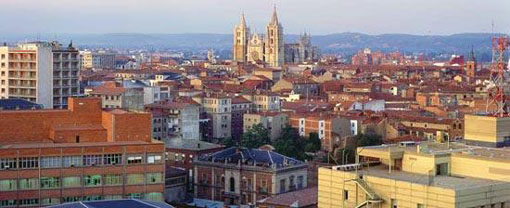
The city of León
One of the most representative monuments of Leon is its Cathedral.
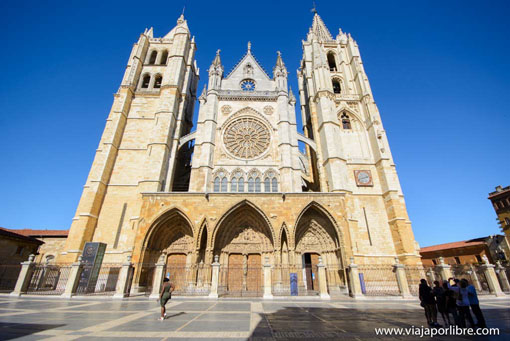
The Cathedral of Leon
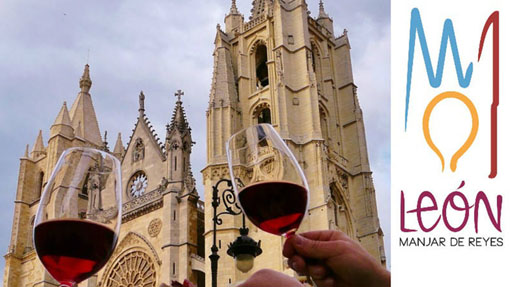
The poster about the appointment as Gastronomic Capital
More than 350 affiliated establishments, a pantry full of quality products and a project, “León Manjar de Reyes” (“León, a feast of Kings”) , full of activities, make up the menu of this city's gastronomic offer. The objective: the excellence in the service and in the quality of what is offered, for the visitor, to repeat in the future.
Its products, its denominations of origin and its guarantee brands cosign Leon, without doubt, in this denomination, as "Gastronomic Capital of Spain 2018".The following dishes are typical of León: the Botillo, picadillo, beef, lamb stew and lamb in chanfaina; the cod to the arriero garlic; the trout soup and garlic soups; the Cocido montañés, the Cocido Maragato (Maragato Stew) or the railway pot; the frog legs from La Bañeza; the Battalion of Valencia de Don Juan; the Valdevimbre stewed omelette; empanadas value products such as cured beef, botillo --the botillo is a meat product, made with pieces cut from the pork cutting, seasoned and stuffed in the pig's blind, which is then smoked and semi-cured--, meat and cheese, fruits, vegetables and legumes.
These are some of those typical dishes:
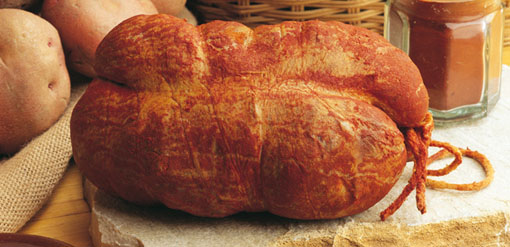
The Botillo
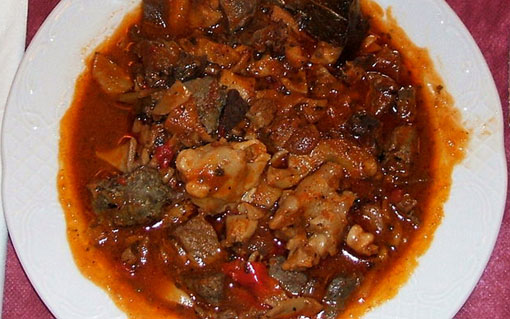
Lamb in chafaina

Cod Ajoarriero
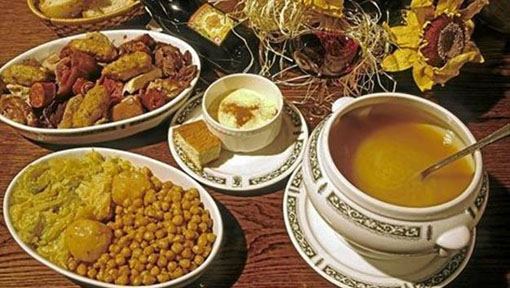
Maragato Stew
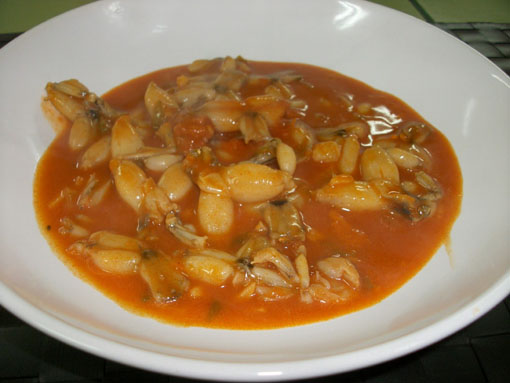
Frog legs from La Bañeza
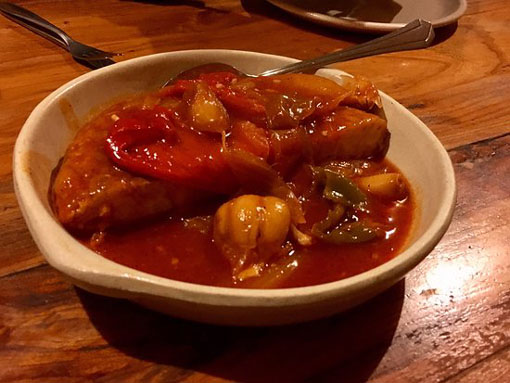
Spanish omelette from Valdevimbre
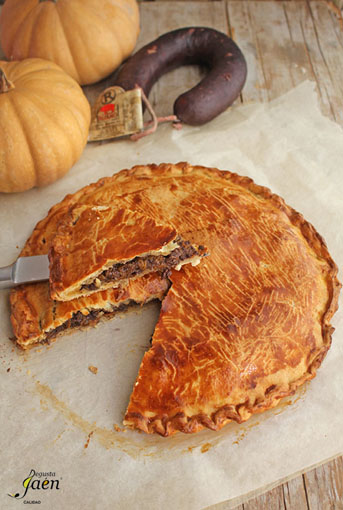
Pasty made of pumpkin and blood sausage
These dishes and others, such varied, have given Leon: three labels with Denomination of Origin; nine Seals of Protected Geographical Indication and six Seals of Marks of Guarantee and one Seal of Collective Mark.
And talking about awards, we can not forget the chefs, Yolanda León and Juanjo Pérez, from the restaurant "Cocinandos" (in the street Campanillas, 1. Tel. 987071378. Closed Sunday and Monday), which, in 2009, got one Michelin Star, that still preserve. That is the only Michelin Star, in the whole province of León. And the restaurant is highly recommendable, because you can eat there for only 43 Euros.
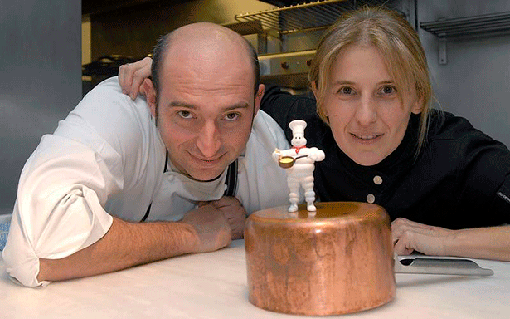
Juanjo Pérez and Yolanda León
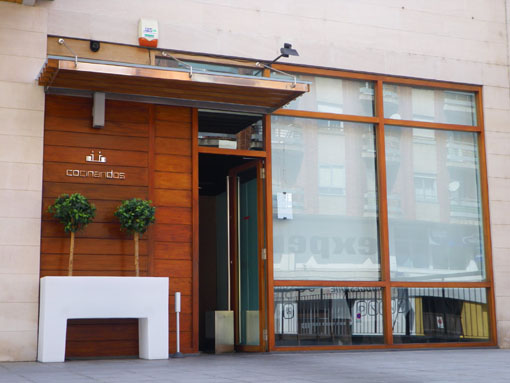
The restaurant Cocinandos
The avant-garde technique of Juanjo and Yolanda, applied to Leonese recipes, has turned them into a gastronomic reference. But in addition, this couple of chefs is known for their support to young generations of chefs and for their respect for the profession, which prevents them from enriching themselves, at the expense of the work of scholars without a contract, in their establishment.
In a recent interview, Yolanda said, for example, about gastronomy in the capital: "It is difficult to define it, I think that, as in all places, we are trying to work with the products of our area, which are wonderful (although we do not believe it). We have more Denominations of Origin and more Protected Geographical Indications than any other province in Spain: vegetables, cheeses, fruits, sausages, meats ... And we, like any good chef, want to show our clients where they are, what Leon tastes for and which are its products".
The journalist asked her about the success of “Cocinandos” and she answered: "The success maybe comes from a lot of work, effort and to have behind us a great team, that makes Cocinandos a reality: without them we are nothing. After 14 years, we want to change location in the future, especially to be able to meet all the demands of our customers, offering them a better location, with greater comfort”.
Another question was about how to design a Michelin Star Menu for less than 45 Euros and she answered: "To get it profitable, you have to buy the seasonal products at the best price, we change the menu every 10 days. If I just bought the wild fish, that has arrived today, for example, instead of tenderloin, I will accompany with cheeks. The key is to escandallar (Determine the price of cost or of sale of a merchandise by the factors of its production) well, to take care of purchases and expenses to detail. Everything is calculated and adjusted, we serve with an exquisite tableware on linen tablecloths, but we do not have a sommelier who dedicates himself to wine or a retinue of waiters: we give work to eight people. We are one of the cheapest stars, in Spain: our menu consisting of 9 passes costs 43 euros with IVA. Price has been decisive, especially in the years of crisis, both Juanjo --my other half, partner, associate ...--, as I wanted to bring our kitchen to all kinds of audiences, that can come without a great effort".
But, before Yolanda and Juanjo, there were other chefs, with much prestige, like for example Carlos Dominguez Cidón, who died, too young, in 2009 –rest in peace--, and who was the first to innovate and get one Michelin Star and two Repsol soles,with his restaurant “Vivaldi”.
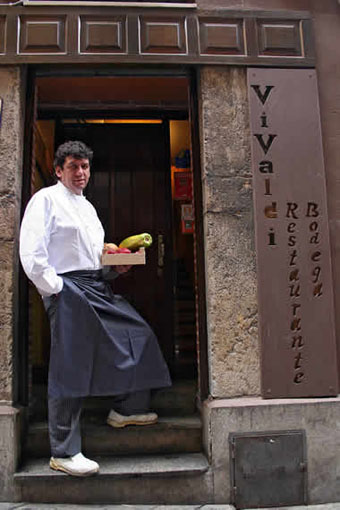
Carlos Dominguez and his restaurant
In another interview with Pedro Llamas (Councilor for Commerce, Consumption and Festivities at the León City Council), on the radio, he said: "There has to be a commitment and, above all, it has to go in quality, in the attention, in the product, in the facilities ..., and we want that, in the end, the people who come to León recommend ..., because León has lived a lot of "by word of mouth tourism", many people who have come from other cities, they leave surprised and in the end other people come, then we have to make that leap of quality, to be excellent ... I think that is where we are going to work, I think "Leon, gastronomic Capital, feast of Kings" is the opportunity to place ourselves as a quality and different destination, within interior tourism”.
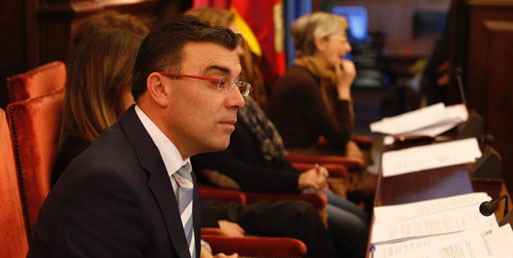
Pedro Llamas
Well, as the Councilor said, I hope that you use the “by word of mouth”, to recommend to go to Leon and hope that you can go there to there this year.
Until my next post, kind regards,
Luis.
Sponsored by Costaluz Lawyers.
Please click below:

 0
Like
Published at 12:46 PM Comments (2)
0
Like
Published at 12:46 PM Comments (2)
Another very small and abandoned village in Spain
Thursday, January 11, 2018
Today I would like to talk to you about an abandoned village almost in the centre of Spain, named Sotillos de Caracena (Province of Soria) and located on the north slope of the Sierra de Pela.
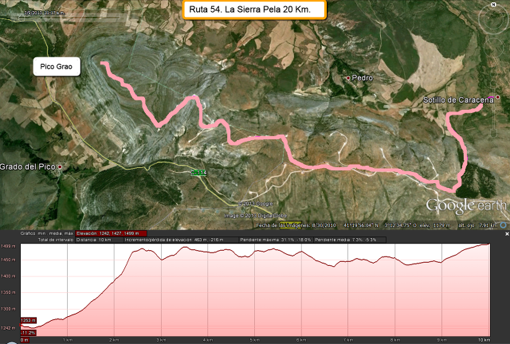
Sierra Pela with the villages Pedro and Sotillos de Caracena
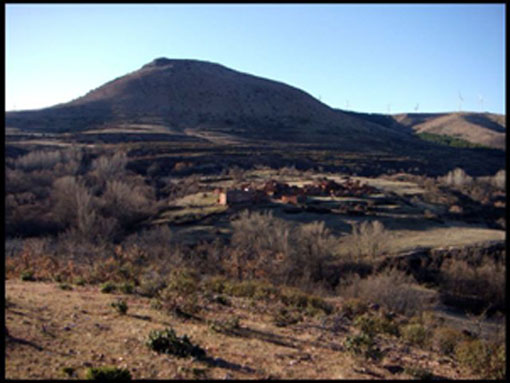
Pedro and Sotillos de Caracena
This village belongs to the municipality of Montejo de Tiermes. Twelve houses made up Sotillos de Caracena, in a harsh environment, with a cold climate and unproductive land.
This is the road that you meet, when you are close to Sotillos de Caracena.
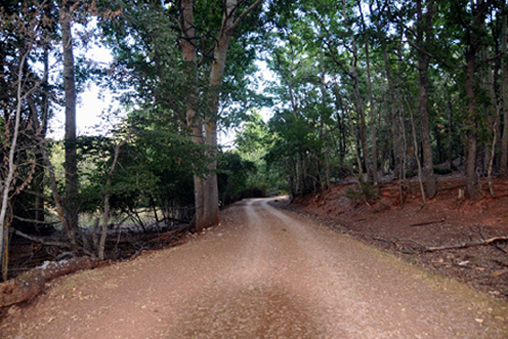
Arriving to Sotillos de Caracena
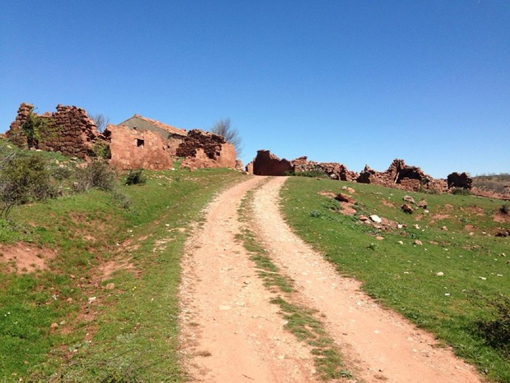
The entrance of Sotillos de Caracena
When you go up inside the village, you meet the Main Square, where the neighbours could dance with the music of the bag-pipers from Noviales.

The uncles Justo and Nicanor´s houses in the Main Square
On the right side you can see the uncle Florentino´s house.
If you follow that Real Street, you can go down to the church, on the right side.
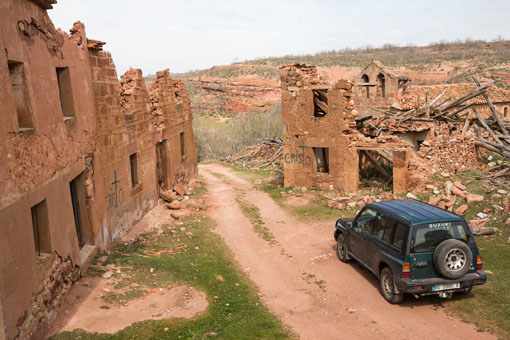
The Main Square going down to the church

The uncle Nicanor´s house

The uncle Agustin´s house and the church of San Miguel
San Miguel was the Patron of Sotillos and they celebrated a party, in his honor, on September 29. The party lasted two days and began with a fanfare, through the streets, in the early morning, announcing the start of the party; later, a mass and a procession with the Saint was celebrated. At noon, there was a small dance and then a meal --where it was customary to kill a lamb, in those two days, to share with family and friends, come from outside--, and, in the evening, more dance, in light of oil lamps, in the Square. The bagpipers of Noviales (the Marcotes), with two bagpipes (dulzainas) and drum, were in charge of animating, with their music, all the people, who were there (they came from other villages, for example Pedro), and where Pedro's tavern owner never lacked, who installed a stall to sell beers and soft drinks there.

Several houses on the Real Street
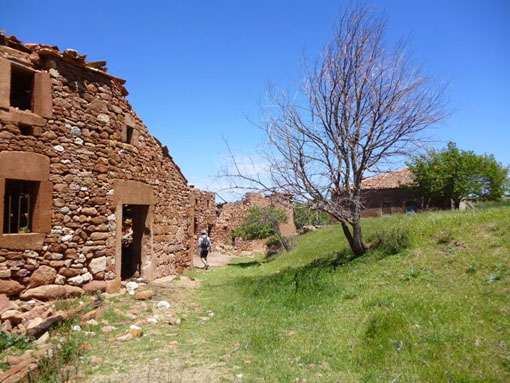
Another houses at the end of the street

The door of a house
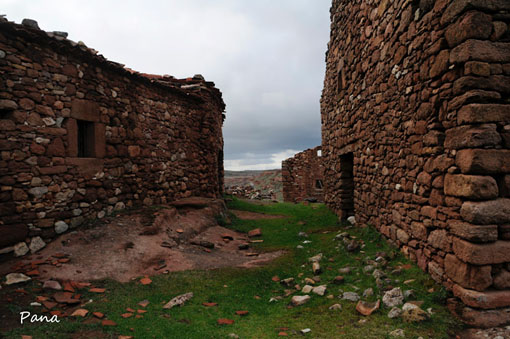
Another street
Angel Barrio de la Morena was the last neighbor, who went out of Sotillos de Caracena, in 1969.
Well, I hope that you will like this article and hope that you can go there sometime.
Until my next post, kind regards,
Luis.
Sponsored by Costaluz Lawyers.
Please click below:

 0
Like
Published at 10:51 PM Comments (0)
0
Like
Published at 10:51 PM Comments (0)
Another spanish saying and proverb 79
Friday, January 5, 2018
Today I want to talk to you about a very popular saying, in Spain: "Caer chuzos de punta" = “Pour” or “Bucket down”.
The "Chuzo", in a closer image, is that stick provided with iron sharp on the end, which was used by night watchmen, as a weapon of respect, formerly.
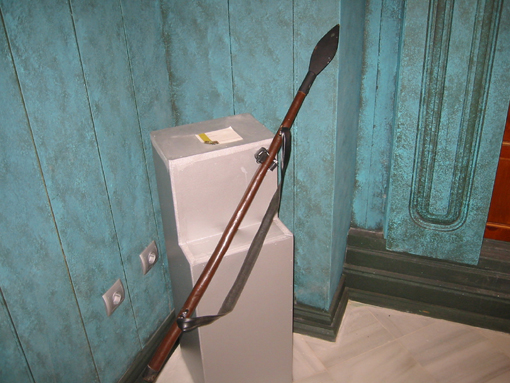
A spiked stick
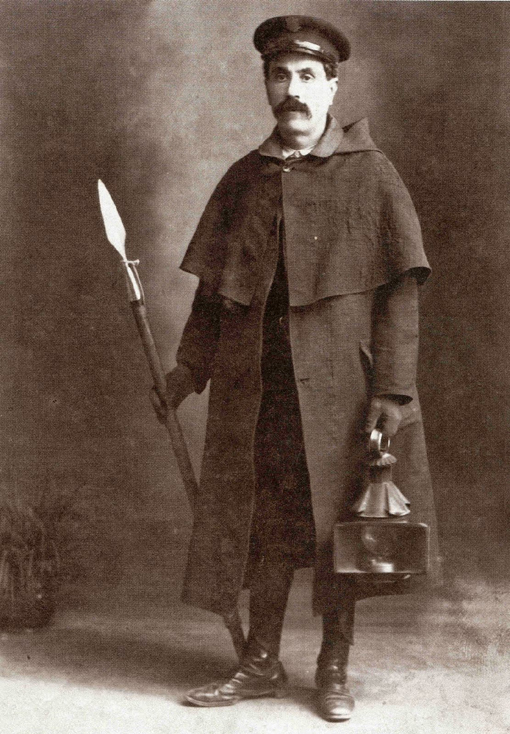
A night watchman with a spiked stick
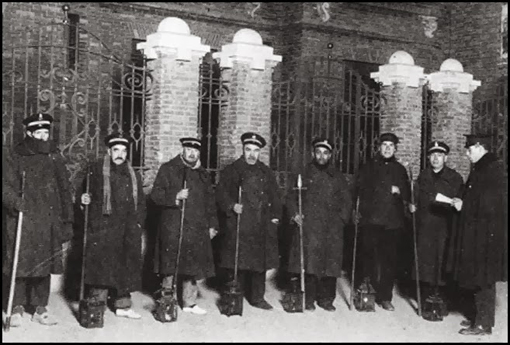
Some night watchmen in Madrid
Also, in the second sense, and by affinity, it is so called to the icicles or occasional ice needles.
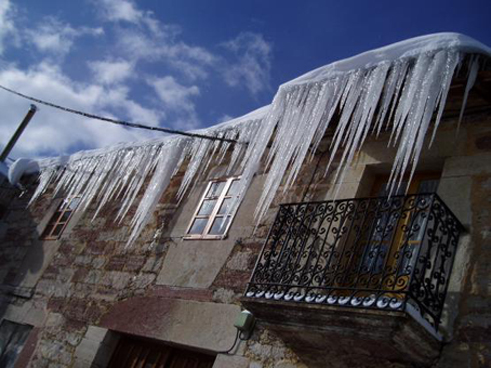
Icicles

Ice needles
From there, then, the figurative phrase in question, for which, it is emphatically declared that it rains, hails or snows with extraordinary violence. For example: "Fortunately, we found a tejavana (a small roof made of a typt of Arabian tile), where shelter ourselves, because it poured, believe me”.
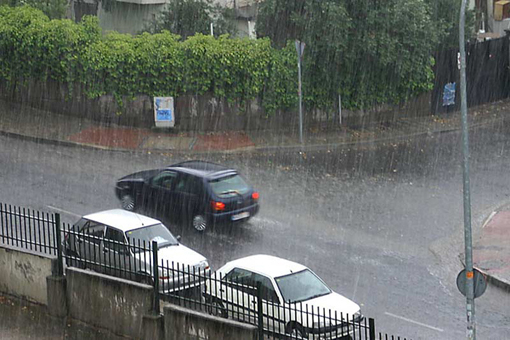
Pouring
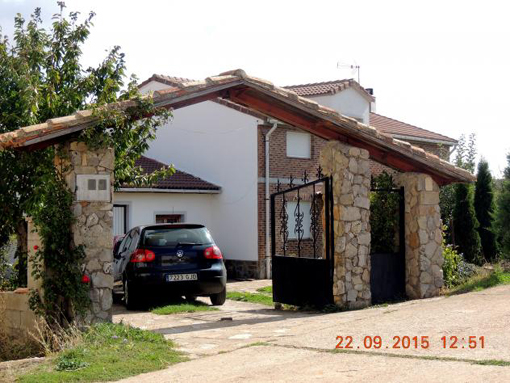
A Tejavana over the open door
Well, I hope that you will like this article, about the expression: “Caer chuzos de punta”.
Until my next post, kind regards,
Luis.
Sponsored by Costaluz Lawyers.
Please click below:

 0
Like
Published at 9:56 AM Comments (0)
0
Like
Published at 9:56 AM Comments (0)
Another spanish and old expression
Tuesday, January 2, 2018
Do you know the expression “A la chita callando”?.Well, in case that you do not, I will explain it to you.
To do one thing "A la chita callando" means to do it with much secrecy, with dissimulation or in secret. There are different theories about its origin. According to some experts, like Julio Cejador, its origin goes back to an old game called “chita” (jacks), that was played with tabas or talus bones (Astragalos).
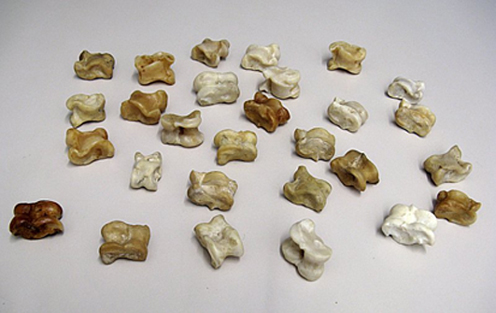
Tabas or Talus bones
Now, I am going to talk to you about this game. According Julio Cejador, "chita is the taba (talus bones) with which the boys played, and the stick, drumstick or bone on which coins are placed and pulled with yews, from a distance, to knock it down, earning the (yew) that is closer to the money that fell".
Other linguists say that it goes back to the Middle Ages, when in the Almoravid era the Arabs introduced a feline, similar to the cheetah, in Spain, called a saeta or chita, which for its agility and ferocity were used to hunt. When Alfonso X decided to ban its use for hunting purposes, many hunters continued to use it secretly –therefore the expression “a la chita calando”, ie: “Hunting with the chita secretly”--.

A chita
For his part, José Luis García Remiro, in the book "What do we mean when we say" ?, defends that it would derive “from the interjective ¡chist !, which is a sound gesture that we use to impose silence when we need our call to be superimposed and it is not drowned by the screaming we want to silence”. From the same family is Chitón, a word to impose silence, which we usually say putting your finger in your mouth, concludes García Remiro.

Shushing
Well, I hope that you will like this article about the expression “A la chita calando”.
Until my next post, kind regards,
Luis.
Sponsored by Costaluz Lawyers.
Please click below:

 0
Like
Published at 10:21 AM Comments (0)
0
Like
Published at 10:21 AM Comments (0)
Spam post or Abuse? Please let us know
|
|